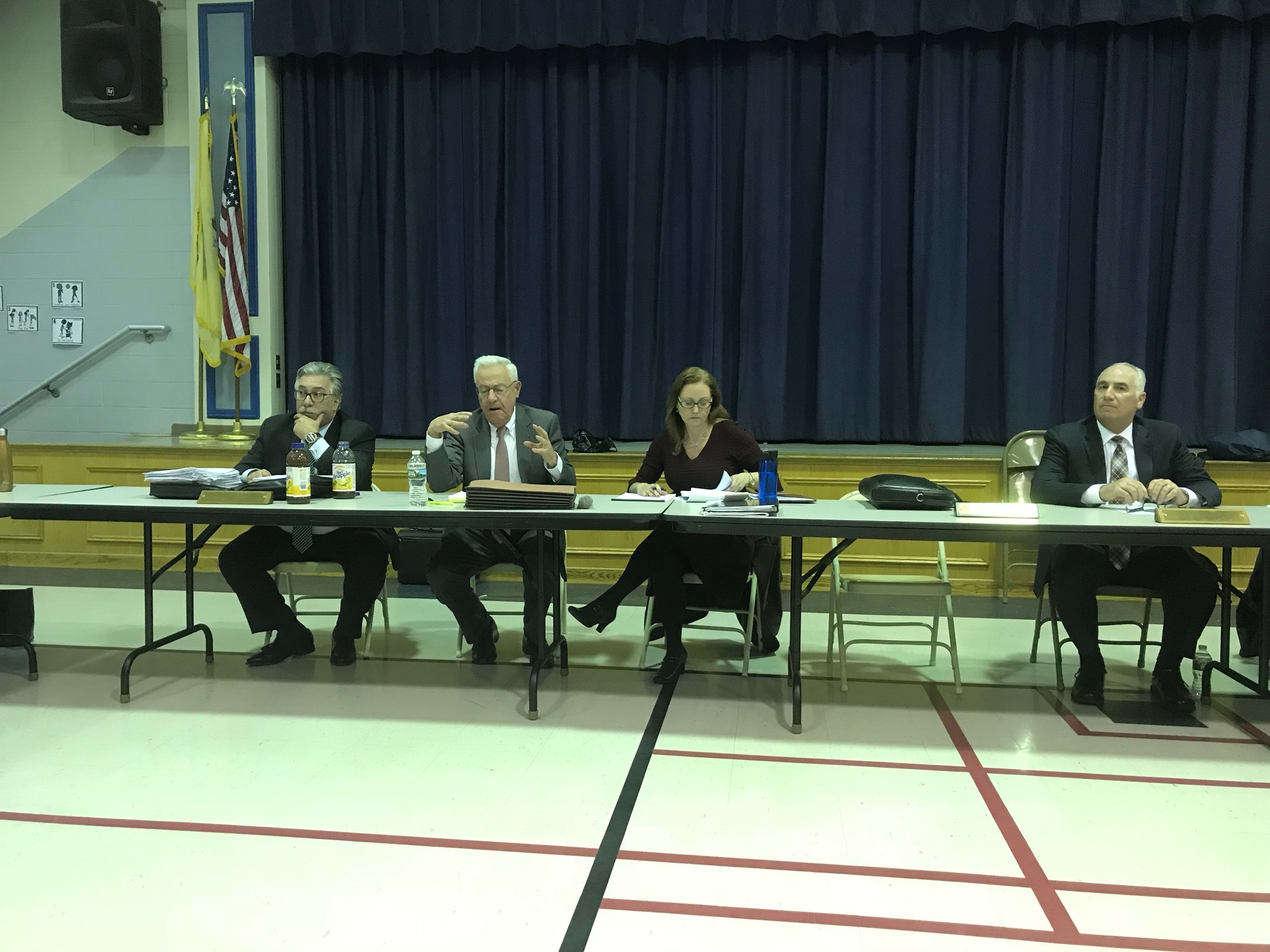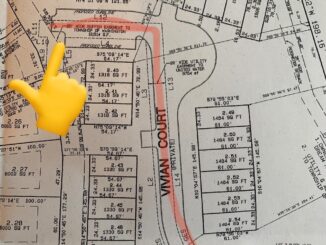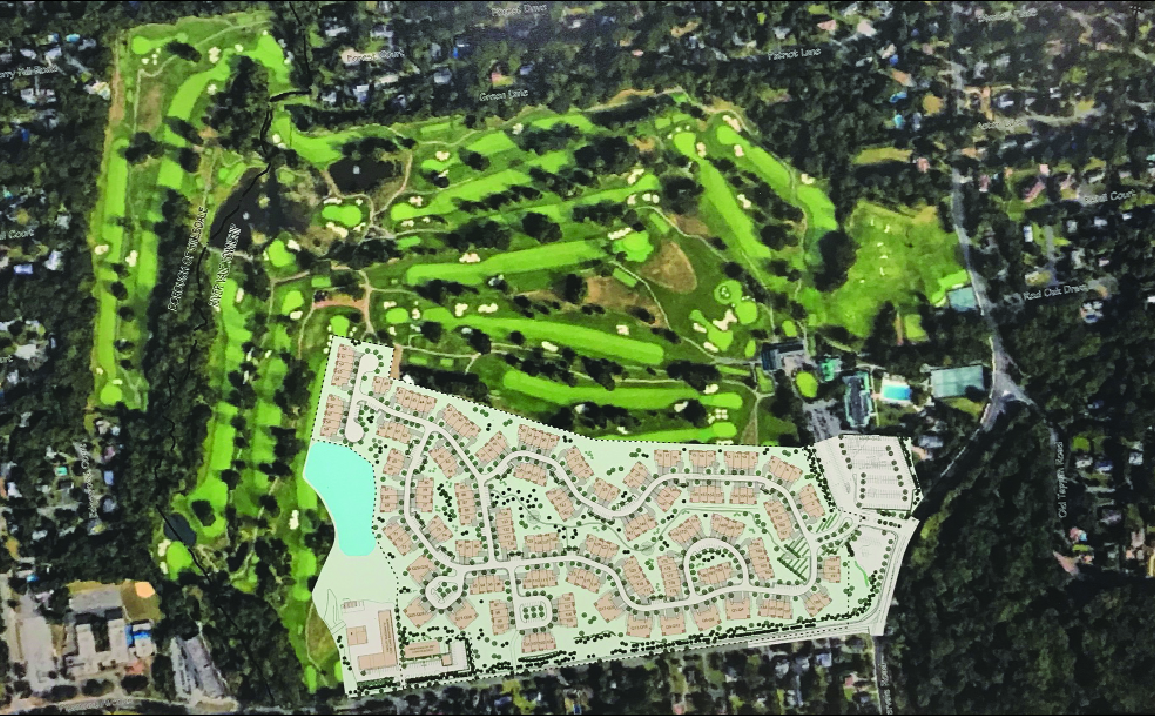
BY MICHAEL OLOHAN
OF PASCACK PRESS
RIVER VALE, N.J.—Roadway widening and new left-hand turn lanes leading up to the busy Piermont Avenue and Rivervale Road intersection—paid for by developers of a proposed 249-unit development at Edgewood Country Club—will ease traffic flow and lead to a “significant decrease” in delays at the congested intersection, despite additional vehicles from the new development, said a traffic expert March 28.
Testifying before the River Vale Joint Planning Board, applicant traffic consultant Karl Pehnke, of Langan Engineering, Lawrenceville, described roadway improvements planned by Woodmont Properties for portions of both Rivervale Road and Piermont Avenue that the applicant will undertake, should the development receive approval.
Next hearing: April 4
The next hearing will be Thursday, April 4, 7:30 p.m. at River Vale Senior and Community Center, 628 Rivervale Road.
Approximately 80 residents attended the third hearing on Woodmont Properties’ application at River Vale Senior and Community Center for a 249-unit development proposed to be built on nine holes at Edgewood Country’s Club’s 27-hole course, including 24 affordable housing units.
Much of the hearing focused on a traffic study conducted by a traffic consultant, plus additional questions on stormwater volumes, storm runoff, water quantity and water quality concerns.
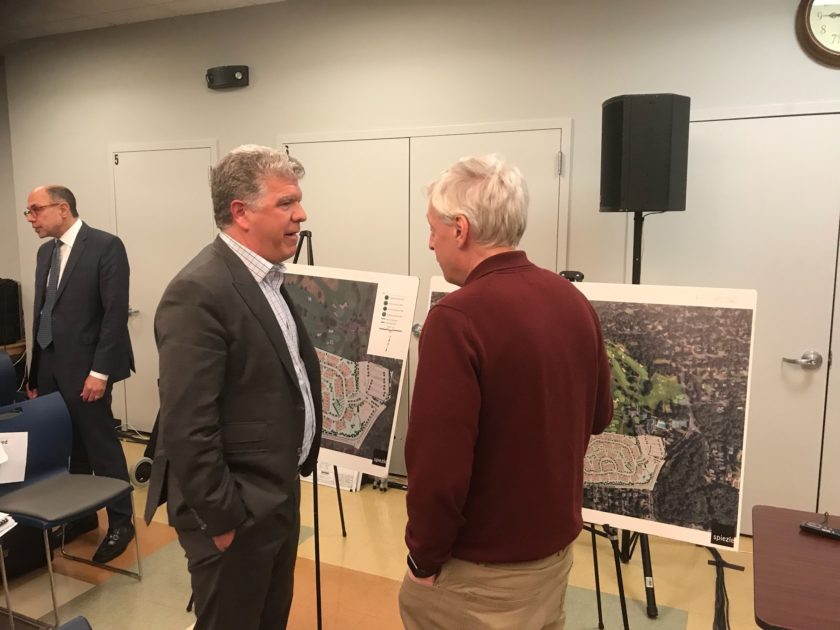
Traffic predictions
Pehnke explained how traffic engineers calculate traffic estimates using standard industry data aggregated from multiple studies which provide reliable estimates of expected traffic volume. He said the new 249-unit development is expected to generate 27 vehicles entering, 88 vehicles exiting, and 12 vehicles exiting and entering the affordable housing complex, between 7:15 and 8:15 a.m. (peak morning period).
He said during peak afternoon travel times, 5 to 6 p.m., traffic projections show 88 cars entering and exiting, including 51 from the new development and 17 from the affordable units.
The affordable housing complex, which is a separate building, has its own driveway on Piermont Avenue, opposite a driveway at Holiday Farm, an existing townhome development with 252 residential units.
Pehnke said placing entryways opposite each other is “good engineering practice” because it does not “introduce new points of conflict in the roadway system.”
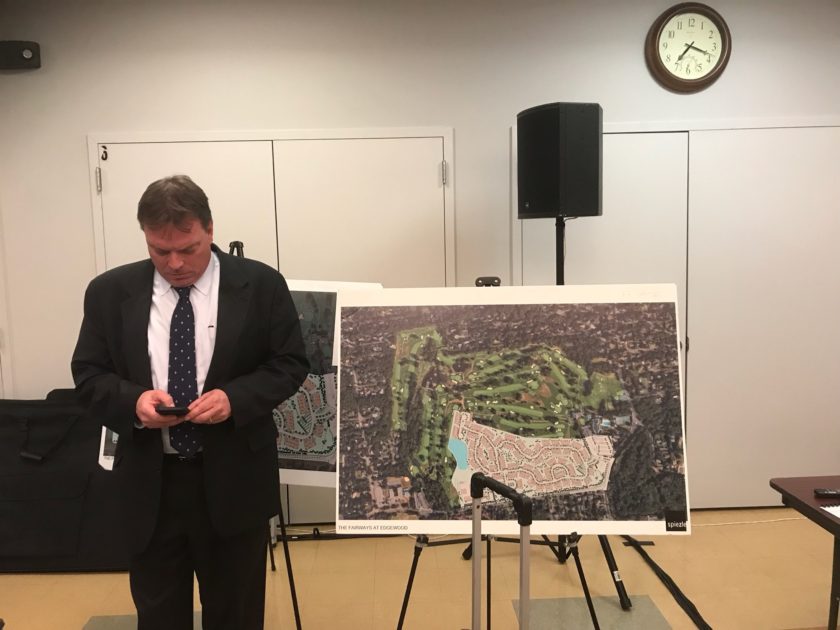
‘Existing, difficult conditions’
Pehnke said the “existing difficult conditions” at the Piermont Avenue-Rivervale Road intersection were front-and-center in consultations with Township Engineer Chris Statile and county transportation officials.
Mayor Glen Jasionowski said the township asked the county to lower the speed limit on Piermont Avenue two years ago and requested a traffic light at Piermont and Rivervale five years ago, although no action was taken.
Pehnke said he worked with county and local engineers to use existing Edgewood Country Club property to propose improvements to ease traffic flow.
Proposed improvements include a left-hand-only turn lane on Rivervale Road heading north into the country club and new development. This will ease backups on the single-lane Rivervale Road, he said.
In addition, a new turn lane—or “slip ramp”—to turn right onto Piermont Avenue when heading south on Rivervale Road will be created by widening the road and a portion of Piermont to allow vehicles to turn before the stop sign. The widening will use existing property owned by Edgewood Country Club, he said.
Moreover, on Piermont Avenue heading east as it approaches Rivervale Road, the road will be widened to allow a right hand turn onto Rivervale Road heading south.
In addition, the applicant proposed another exit for the new development onto Piermont Avenue opposite Mark Lane. That would allow exit-only right turns from the development onto Piermont, he said.
‘Improved operations’
He said the proposed plan provides “improved roadway geometry and improved (traffic) operations.”
He said during construction the developer has agreed to lay underground conduit cable for possible future traffic control signals at the intersection.
Pehnke said “rapid flashing beacons” will also be installed at the Piermont-Rivervale intersection to enable pedestrians to safely cross the busy thoroughfare. The beacons can be manually activated by a crossing guard or pedestrian.
“The developer is prepared to donate both the land and the cost and construct the improvements for the county and to set it up for signalization in the future,” Pehnke said.
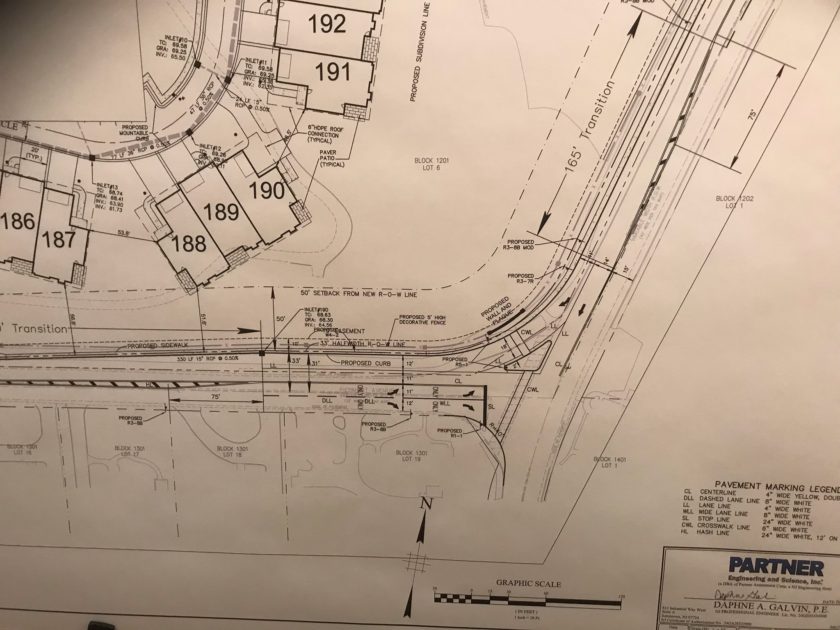
‘In actual better condition’
Pehnke said the applicant’s recommended roadway improvements “will accommodate the traffic and mitigate our impact and leave the roadway in actual better condition than it is today.”
After Statile said he verified the applicant’s trip-generation computer model used to generate traffic counts, Jasionowski asked Statile whether he believed the applicant’s development will improve conditions at the intersection.
Statile said the improvements planned will “mean less delay…and more throughput” of traffic at the intersection.
Pehnke said an exit lane opposite Mark Lane will not affect traffic volumes or conditions. Resident Charles Garrison said the improvements created “ a little bit of flexibility but not much.” Garrison was critical of improvements and said during peak morning time, 88 vehicles will be added.
Pehnke defended the applicant’s “very expensive and substantial” planned roadway improvements.
“Traffic is quite an issue and it’s not going to get any better,” said Garrison, noting statistics showing long commute times for residents due to traffic.
Earlier, applicant engineer Daphne Galvin said that the revised plans would show two detention basins—not three as initially proposed—and though stormwater volumes will increase due to increased impervious surface, the discharge rates of storm runoff will be reduced below current conditions. This reduction of post-development peak runoff rates is required under stormwater management rules of the state Department of Environmental Protection, Galvin said
Several residents questioned what impacts the increased volume of runoff generated might have on nearby properties, and whether the applicant was aware of “underground streams” that might be affected by increased storm runoff volume.
Galvin said most on-site storm runoff will be directed to the two detention basins, which are sized to handle up to a 100-year storm event.
She said no study was proposed on underground water flows. Galvin also said the on-site runoff being directed to two detention basins will be used to irrigate the 18-hole golf course.
Galvin said the golf course irrigation also provides groundwater recharge—which NJDEP does not require—as well as reusing storm runoff to irrigate fairways and conserve potable water.
Several residents questioned stormwater calculations, and possible off-site impacts to nearby waterways and possible increase in flooded basements or increased water flows.
Galvin offered a detailed explanation of engineering storm runoff models, noting the detention basins will reduce peak runoff flows and not impact downstream properties.
“We don’t expect the project to have a negative impact on downstream properties,” said Galvin, as she explained most runoff will be contained in detention basins on site and released slowly to Holdrum Brook.
Water flowing out of a basin due to a severe storm first runs through a grassed swale or riparian buffer area before entering the nearby brook, she said.

